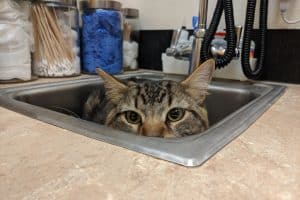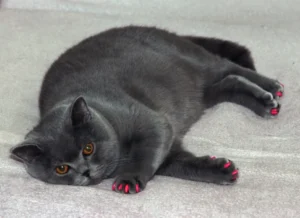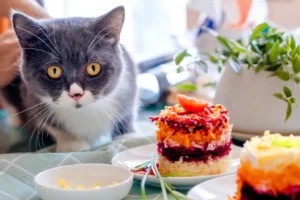Cat owners may start to worry when they notice that their feline friend’s gums are not the healthy shade of pink they should be. But fear not, there are reasons why a cat’s gums may not be pink, and understanding these reasons is crucial for their health and well-being.
Importance of Pink Gums
Having pink gums is a good sign that your cat is in good health. Pink gums indicate proper blood circulation and oxygenation, which are essential for overall well-being. Monitoring your cat’s gum color is a great way to quickly assess their health. Pale gums could be a sign of an underlying health issue that needs attention.
Common Reasons for Pale Gums
There are several reasons why your cat’s gums might appear pale instead of pink. Anemia, dehydration, or shock can cause paleness in the gums. Infections, heart problems, or even dental issues can also be culprits. It’s vital to consult your veterinarian if you notice any changes in your cat’s gum color.
A unique insight : Sometimes, stress or anxiety can also lead to pale gums in cats. Just like in humans, stress can affect a cat’s overall health, including their gum color. Keep an eye on your furry friend’s stress levels and make sure they feel safe and secure in their environment.
Health Conditions to Consider
If you’ve noticed that your cat’s gums are not their usual pink color, it could be a sign of an underlying health issue. One common condition that can cause a change in gum color is anemia. Anemia in cats can be caused by various factors such as parasites, chronic disease, or poor nutrition. It leads to a decrease in red blood cells, resulting in pale or white gums instead of the healthy pink color.
Another health concern to consider is dental issues. Gum discoloration can be a result of gum disease, tooth decay, or oral infections. These problems can lead to inflammation, bleeding, and changes in gum color. Regular dental check-ups and good oral hygiene are essential to prevent and address these issues.
If you notice any changes in your cat’s gum color, it’s important to consult with your veterinarian. They can perform a thorough examination and diagnostic tests to determine the underlying cause. Early detection and treatment of health conditions are crucial for your cat’s well-being.
Nutritional Factors
What your cat eats plays a significant role in maintaining the health and color of their gums. A balanced diet rich in essential nutrients is crucial for optimal gum health. Key nutrients such as vitamin C, vitamin K, and iron play a vital role in promoting healthy gums and preventing gum discoloration.
Ensure that your cat’s diet includes high-quality protein sources, vitamins, minerals, and antioxidants. These nutrients support overall oral health and contribute to maintaining pink gums. Additionally, providing dental treats or toys can help promote dental health and reduce the risk of gum issues.
If you’re concerned about your cat’s gum color, evaluate their diet and consult with your vet to ensure they are receiving the necessary nutrients for healthy gums. Making adjustments to their diet and providing proper dental care can go a long way in maintaining pink and healthy gums for your feline friend.
Dental Hygiene Tips
Maintaining good dental hygiene for your feline friend is crucial for their overall health. To help improve your cat’s dental health and prevent pale gums, consider the following tips:
Regular Brushing: Just like humans, cats benefit from regular brushing to remove plaque and tartar buildup. Use a feline-friendly toothbrush and toothpaste to keep their teeth clean.
Dental Treats and Toys: Offering dental treats or toys specifically designed to promote oral health can help reduce tartar and plaque buildup.
Annual Dental Check-ups: Schedule regular check-ups with your veterinarian to monitor your cat’s oral health and address any issues early on.
Balanced Diet: Providing a balanced diet that supports dental health can make a big difference. Consider incorporating dental-friendly kibble or wet food into their diet.
Water Additives: Adding dental water additives to your cat’s drinking water can also help reduce plaque and tartar buildup.
Remember, taking proactive steps to care for your cat’s dental hygiene can contribute to healthier gums and overall well-being.
When to See a Vet
While pale gums in cats can sometimes be a minor issue, there are instances where it is crucial to seek veterinary attention:
Persistent Pale Gums: If your cat’s gums remain pale or show signs of changes in color for an extended period, it’s essential to consult a vet.
Bleeding Gums: If you notice bleeding gums along with paleness, it could indicate a more severe problem such as periodontal disease or anemia.
Lethargy or Loss of Appetite: If your cat seems lethargic, has a loss of appetite, or shows other signs of illness alongside pale gums, it’s time to see a vet.
In these scenarios, prompt veterinary care is necessary to diagnose any underlying issues and provide appropriate treatment for your furry companion’s well-being.
Preventive Measures
To ensure your feline friend maintains healthy pink gums, it’s essential to prioritize preventive measures. Regular brushing of your cat’s teeth can help remove plaque and prevent gum disease. Special dental treats or toys designed to promote oral health can also be beneficial. Additionally, providing a balanced diet that supports dental health and offering regular dental check-ups are crucial steps in maintaining pink gums in your cat.
The Role of Regular Check-Ups
Don’t underestimate the importance of regular veterinary check-ups in keeping your cat’s gums healthy. These check-ups allow a professional to monitor your cat’s oral health, catch any potential issues early on, and provide necessary treatment. If you notice a change in your cat’s gum color, such as them not being pink, it’s best to consult with a vet promptly. Remember, early detection is key to addressing any concerns efficiently and effectively.
Unique Insight: Did you know that the color of a cat’s gums can also be affected by dehydration or underlying health issues? Keeping your cat well-hydrated and addressing any health concerns promptly can help maintain healthy pink gums.
Why are my cat’s gums not pink?
If you’ve noticed that your cat’s gums are not pink, it could be a sign of poor gum health. Pale or white gums in cats can indicate anemia, inflammation, infection, or nutritional deficiencies. It’s essential to monitor your cat’s gum color regularly as part of their overall health and wellness.
One common cause of pale gums in cats is anemia, which can be caused by various factors such as parasites, nutritional imbalances, or underlying health conditions. If you suspect your cat is anemic, it’s crucial to visit your veterinarian for a proper diagnosis and treatment.
Inflammation, infection, and nutritional deficiencies can also lead to changes in gum color. Gingivitis, periodontal disease, or vitamin deficiencies can all impact the health of your cat’s gums. Maintaining good dental hygiene, providing a balanced diet, and regular veterinary check-ups can help prevent these issues.
If you notice any changes in your cat’s gum color, along with other symptoms like bad breath, swelling, or bleeding, it’s essential to seek veterinary attention promptly. Your vet can determine the underlying cause of the gum discoloration and provide appropriate treatment to ensure your cat’s oral health.
Keep an eye on your cat’s gum color as part of their overall health monitoring routine. Healthy, pink gums indicate good gum health, while pale or white gums may be a sign of an underlying issue that requires attention from a professional.
Fun Fact About Feline Gum Health
Did you know that cats can develop dental problems as early as six months old? It’s crucial to start your feline friend on a good dental care routine early to prevent gum disease and other oral health issues down the line. Regular brushing, dental treats, and annual dental check-ups at the vet can all contribute to good feline gum health. Give your cat the best chance at healthy gums by starting good oral care habits early on in their life.
Alex, a passionate animal lover, has experience in training and understanding animal behavior. As a proud pet parent to two dogs and three cats, he founded AnimalReport.net to share insights from animal experts and expand his knowledge of the animal kingdom.









